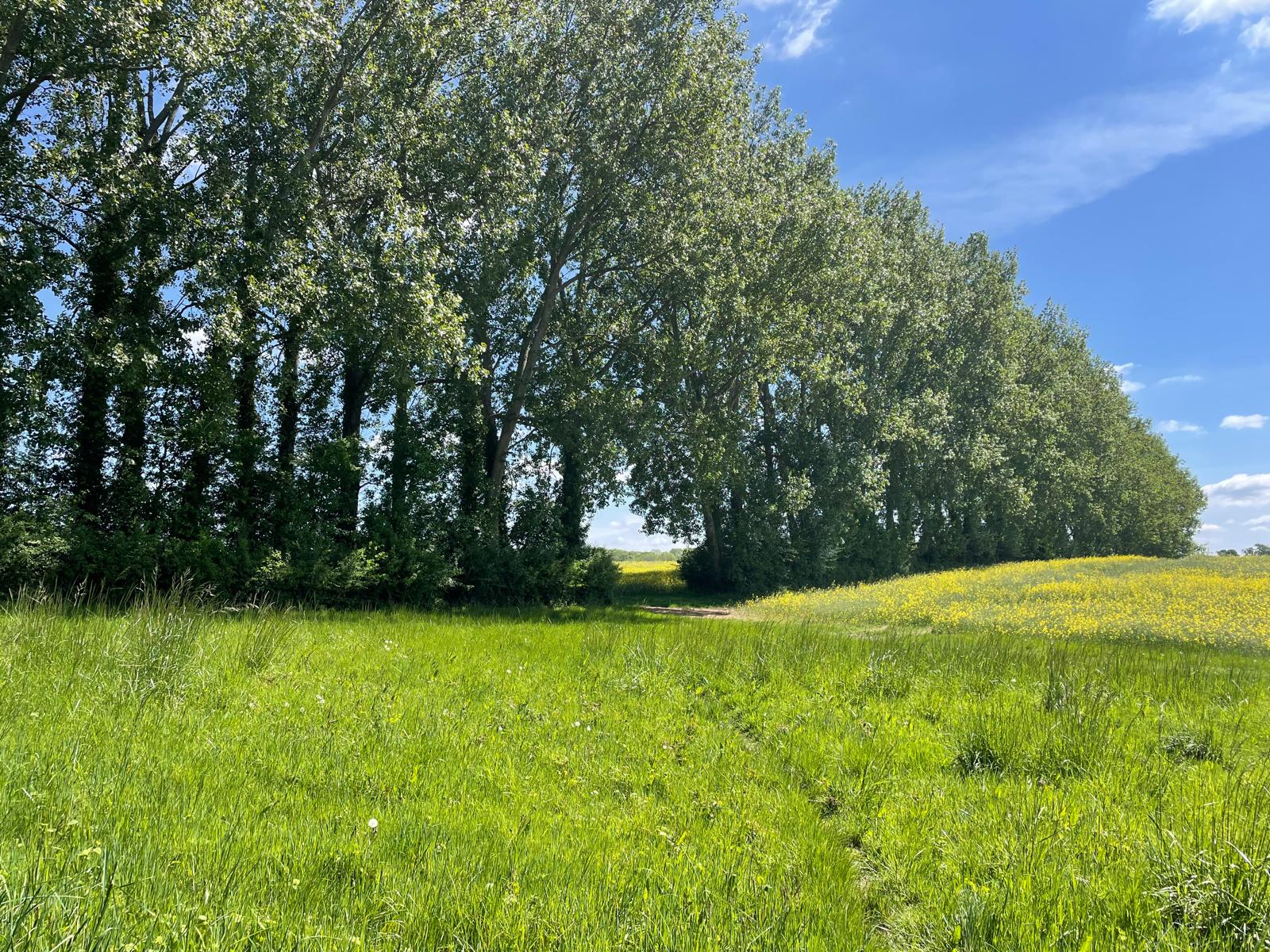Waypoint 7 Edge of the Downs | Ranger Cadets guided walking trail

Take a look at this line of trees. They are Lombardy poplars.
Do you notice that the trees are not all the same height? There seem to be two sets, one taller than the other.
Yet all these trees were planted at the same time.
Can you think of anything that might have caused one set to grow higher than the other?
It must be something below ground, mustn't it?
Yes it is. What you see here is the effect of two different soil types. One is the chalk soil that makes up most of the South Downs. It's pretty good soil for farming - as you could guess from the number of farms on the Downs. That's because chalk soil is light, easy to work and warms up quickly in Spring.
But it's not as good at holding moisture or nutrients as the other soil type - clay.
Here at the edge of the South Downs this line of poplars illustrates that well. The tall trees are rooted in clay soil. That means they've been getting more water and other nutrients out of the soil over the years. So they have grown taller.
One way to tell what kind of soil is under your feet, here at the edge of the South Downs, is to look at your boots. If they're wet and muddy and you're splashing through puddles it's almost certainly clay soil. Dry and firm ground means South Downs chalk.
The very last part of this walk will take us back to Waypoint 1 and the Food Wood. And there's one more thing to look out for, as we walk along this last leg.
Look closely on both sides of the path and count, as you walk, how many stumps you can see of big trees cut down close to the ground.
Can you think why Andy and his neighbour on the other side of this path would have cut down so many trees? Not because they don't like trees. We know that from all the woods we've seen that Andy and Rebecca have planted.
No, the problem with these big trees was that they were suffering from a disease and, if left standing, they might have fallen and hurt someone.
Do you remember the lovely, tall, airy ash trees we saw earlier? Well the trees that were cut down here were ash trees too. Unfortunately they had caught a disease called Ash dieback. Caused by a fungus, this nearly always kills the tree. The only remedy is to cut it down to prevent accidents.
Well we're almost at the end of our countryside ramble at the edge of the South Downs. It's a circular walk, so the end is also right next to the beginning.
Which means you now have a choice. You can turn left at the end of the path, find the stile to the Food Wood and go all round again.
Or you can bear right and head into the old village of Owslebury, which dates back to the reign of a king called Edgar the Peacable.
Prominent in the village is the Ship Inn, built in the 17th century, where you can reward yourself for your efforts with good food and refreshments.
There's a play area for children and a pétanque pitch for parents. But you might just feel like having a seat in the gardens, looking out over the South Downs below, and reflecting on your ramble through the Hampshire countryside.
If it's a little chilly out, you can step Inside the dog-friendly, wood-beamed Inn, and warm your hard-worked feet at the cosy fire.
It's up to you.
But I know which way I would turn.







